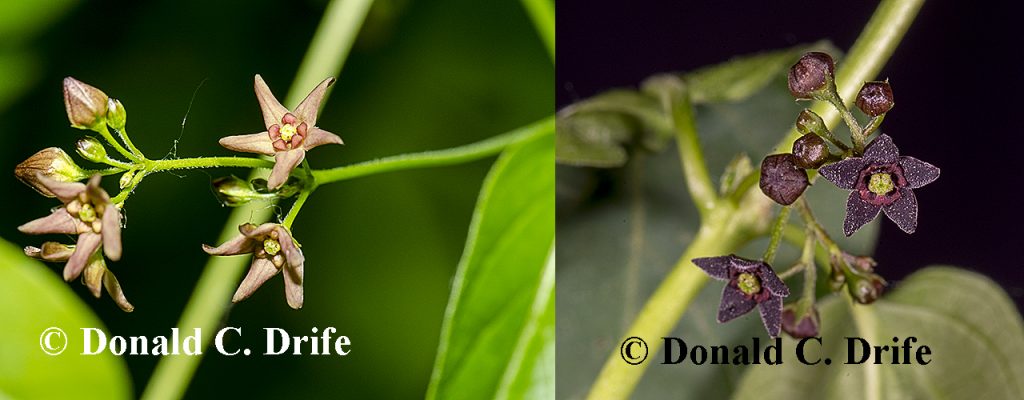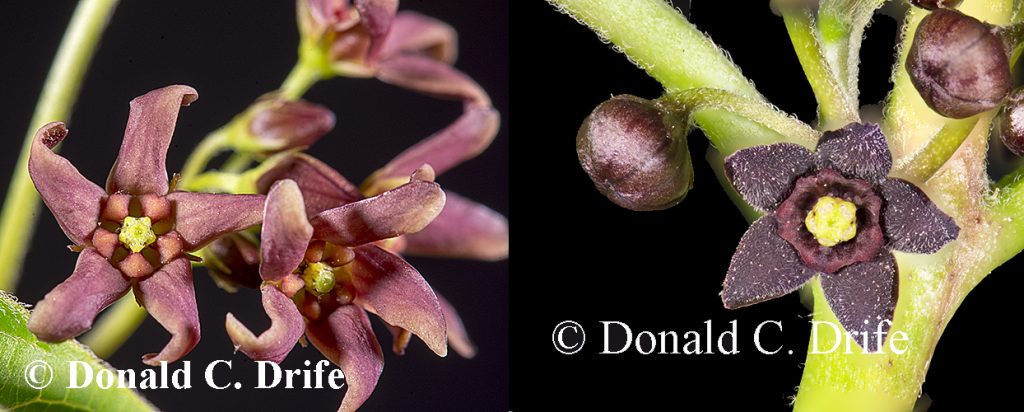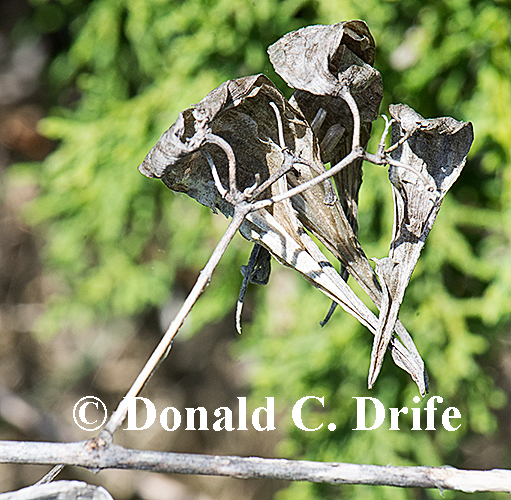
I am assembling a talk on Michigan Invasive Species and needed photographs of Black Swallow-wort. I asked several friends for locations. I was surprised to discover that the first three stations I visited were Pale Swallow-wort.
Black Swallow-wort (Vincetoxicum nigrum or Cynanchum louiseae) and Pale Swallow-wort (Vincetoxicum rossicum or Cynanchum rossicum) are two similar invasive vines. Black Swallow-wort is also called Louise’s Swallow-wort or Black Dog-strangling Vine. Other names for Pale Swallow-wort include: Dog-strangling Vine or European Swallow-wort.

Most people attempt to distinguish the two species based on flower color. However, it is difficult, without some field experience, to separate these two species using the flower color. Dr. Anton Reznicek on the Michigan Flora website writes, “The corollas in both our species are dark purplish, but they run toward black in V. nigrum [Black Swallow-wort] and tend to be somewhat paler in V. rossicum [Pale Swallow-wort], which also has longer corolla lobes (at least twice as long as broad) and only half as many chromosomes.” In Black Swallow-wort the corollas (petals) are about as long as they are wide and are covered with fine hairs. In Pale Swallow-wort the corollas are about twice as long as wide and are hairless. Peduncles (flower cluster stalks) are shorter in Black Swallow-wort than Pale Swallow-wort.

My wife commented that the tips of the flower buds on Black Swallow-wort are rounded and on Pale Swallow-wort they are bluntly pointed. I do not know if this is constant, but it held true for our limited sample.
Swallow-worts are in the family Apocynaceae which includes the Milkweeds and Dogbanes.

Swallow-worts are poisonous to Monarch larva. If a Monarch butterfly lays her eggs on the similar Swallow-wort instead of Milkweed (Asclepius spp.) then the larva die. An additional problem is that Swallow-worts are toxic to livestock and deer. In northern Oakland Co. Pale Swallow-wort is moving into pastures and causing problems for livestock.
Black Swallow-wort has been in Michigan since the 1880s. Its distribution is poorly known and should be reported wherever it is seen. Collected specimens are from the southern four tiers of counties and then at the tip of the Lower Peninsula. It must be found at other sites in northern Michigan. There are reports from the Traverse City Area. Pale Swallow-wort was first reported in 1968 and we have records from four counties in the southern three tiers. As the Michigan Flora website says, “It should be stamped out wherever observed.” Reports of both Swallow-worts should be made through the Midwest Invasive Species Information Network (MISIN). They have an online reporting tool and also a downloadable smart phone app.
I thank John DeLisle of Natural Community Services, Donna Kuchapski, and Debbie Jackson for helping me locate Swallow-wort stations.
Copyright 2019 by Donald Drife
Webpage Michigan Nature Guy
Follow MichiganNatureGuy on Facebook
